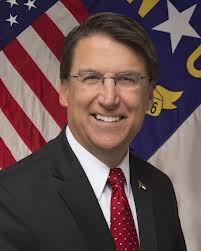If I had a dream, it would be that all people, regardless of color or nationality, would have the same shot at success that I have. And in the glow of the 50th Anniversary of Martin’s speech, I am depressed that we aren’t there yet.
And infuriated that the policies of the Left, who claim to have the best interests of black America as their goal, has made it so much harder than it has to be:
The history of black workers in the United States illustrates the point. As already noted, from the late nineteenth-century on through the the middle of the twentieth-century, the labor force participation rate of American blacks was slightly higher than that of American whites. On other words, blacks were just as employable at the wages they received as whites were at their very different wages. The minimum wage law changed that. Before federal minimum wage laws were instituted in the 1930’s, the black unemployment rate was slightly lower than the white unemployment rate in 1930. But then followed the Davis-Bacon Act of 1931the National Industrial Recovery Act of 1933 and the Fair Labor Standards Act of 1938 – all of which imposed government-mandated minimum wages, either on a particular sector or more broadly.
The National Labor Relations Act of 1935, which promoted unionization, also tended to to price b lack workers out of jobs, in addition to union rules that kept blacks from jobs by barring them from union membership. The National Industrial Recovery Act raised wages in the Southern textile industry by 70% iin just five months and its impact nationwide was estimated to have cost blacks half a million jobs. While this Act was later declared unconstitutional by the Supreme Court, the Fair Labor Standards Act of 1938 was upheld by the High Court and became the major force in establishing a national minimum wage. As already noted, the inflation of the 1940’s largely nullified the effect of the Fair Labor Standards Act, until it was amended in 1950 to raise minimum wages to a level that would have some actual effect on current wages. By 1954, black unemployment rates were double those of whites and have continued to be at that level or higher. Those particularly hard hit by the resulting unemployment have been black teenage males.
Even through 1949 – the year before a series of minimum wage escalations began – was a recession year, black teenage male unemployment that year was lower than it was to be during the later boom years of the 1960’s. The wide gap of unemployment rate of black and white teenagers dates from the escalation of the minimum wage and the spread of its coverage in the 1950’s. The usual explanations of high unemployment of black teenagers -inexperience, less education, lack of skills, racism – cannot explain their rising unemployment, since all these things were worse during the earlier period when black teenage unemployment was much lower. Taking the more normal year of 1948 as a basis for comparison, black male teenage unemployment then was less than half of what it would be during the decade of the 1960’s and less than one-third of what it would be in the 1970’s.
Unemployment among 16 and 17-year-old black males was no higher than among white males of the same age in 1948. It was only after a series of minimum wage escalations began that black male teenage unemployment not only skyrocketed but became more than double the unemployment rates among white male teenagers. In the early twenty-first century, the unemployment rate for black teenagers exceeded 30 percent. After the American economy turned around in the wake of the housing and financial crisis, unemployment among black teenagers reached 40 percent.
The juxtaposition of the stories this week, Martin’s speech and the fast food worker’s strike, is a simple lesson of a sublime dream turned into nightmare by the policies of a party gone horrible wrong.









